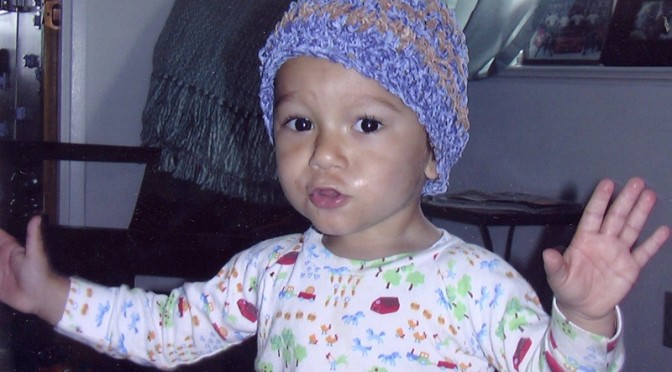We all need to be mindful of toxic levels of stress in our daily life. Although thriving through-out the life cycle occurs when we allow ourselves manageable degrees of stress. The differentiation is vital.
Early childhood stress is a legitimate concern; distinguishing it from challenges children engage in as they develop is essential. Babies are vulnerable to toxic levels of stress. If the stress hormone goes up, and stays up, or is triggered repeatedly, changes to the brain’s emotional center—the amygdala—where fear and anxiety reside, will likely occur. As the effects cascade it affects the part of the brain (hippocampus) important to memory and mood. The long-term health risks mount. Ignoring cries is rarely the right idea. But, if the cries are short and, for instance, are part of a process of having the infant reach autonomous sleep habits, and the normal routine is that a caregiver is always close by, then baby is probably safe. Naturally the recommendation is a cuddle and sway back and forth, but babies cry for a few different reasons. It’s not always that simple to soothe them. Those with colic may not get consoled for quite some time. BTW, there was a passing story about moms with migraines being twice as likely to have babies who suffer from colic. Helping your little one learn to self-regulate is a magical enterprise—one that becomes more magical when they find your music and dance with them mesmerizing.
This smiling voluptuous Thai baby comes as no surprise to anyone who has had the privilege of visiting Thailand and meeting its people. It was an incredible joy to see, while passing by on motorcycle, a young mom and baby dancing in their humble bamboo home. This was just outside Baan Unrak, in Sangkhla Buri, Kanchanaburi, in the western border area. Many refugees and immigrants fleeing war and forced slavery in Burma have settled there.
To see more on the subject of stress in childhood see: Tender Young Brains
What kind of childhood stress should parents actually be stressing about?
By Anna Reisman|Posted Wednesday, Jan. 18, 2012, at 12:00 PM ET
http://slate.me/yCkEaQ
Prenatal maternal stress programs infant stress regulation by Elysia Poggi Davis1,2, Laura M. Glynn1,3, Feizal Waffarn2, Curt A. Sandman1
Journal of Child Psychology and Psychiatry
Volume 52, Issue 2, pages 119–129, February 2011
http://onlinelibrary.wiley.com/doi/10.1111/j.1469-7610.2010.02314.x/full
Prescient Human Fetuses Thrive by Curt A. Sandman, Elysia Poggi Davis, Laura M. Glynn
Psychological Science January 2012 vol. 23 no. 1 93-100
http://pss.sagepub.com/content/23/1/93.short+
Development of parenting self-efficacy in mothers of infants with high negative emotionality†
Beth Troutman*, Tracy E. Moran, Stephan Arndt, Ralph F. Johnson, Michael Chmielewski
Infant Mental Health Journal
Volume 33, Issue 1, pages 45–54, January/February 2012
http://onlinelibrary.wiley.com/doi/10.1002/imhj.20332/full
Association of maternal interaction with emotional regulation in 4- and 9-month infants during the Still Face Paradigm by Jean R. Lowea, , , Peggy C. MacLeana, Andrea F. Duncana, Crystal Aragóna, Ronald M. Schraderb, Arvind Caprihanc, John P. Phillipsd
Infant Behavior and Development
Available online 2 January 2012
http://www.sciencedirect.com/science/article/pii/S0163638311001238
Epigenetic Influences That Modulate Infant Growth, Development, and Disease by Naveed Hussain
http://online.liebertpub.com/doi/abs/10.1089/ars.2011.4484
Cortisol patterns of depressed mothers and their infants are related to maternal–infant interactive behaviours by N. Letourneauab*, B. Watsonb, L. Duffett-Legerb, K. Hegadorenc & P. Tryphonopoulosb
Journal of Reproductive and Infant Psychology
Volume 29, Issue 5, 2011
http://www.tandfonline.com/doi/abs/10.1080/02646838.2011.649474
